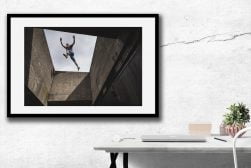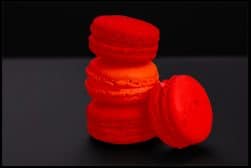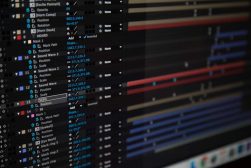
Boris FX Optics Review: Visual Effects Plugin for Photography
Optics makes it easy to add Hollywood-level effects to your images, with thousands of presets, filters, film stocks and more. Read our full review.
Software | By Teryani Riggs
When I was first asked if I wanted to review Boris FX Optics, I imagined I’d just be looking at another spiffed up presets package. At best, something á la Topaz or Nik Filters (both of which I use occasionally).
At worst, something along the lines of Luminar’s “Looks” (in my opinion, one of the weaker of Skylum’s offerings). Boy was I wrong!
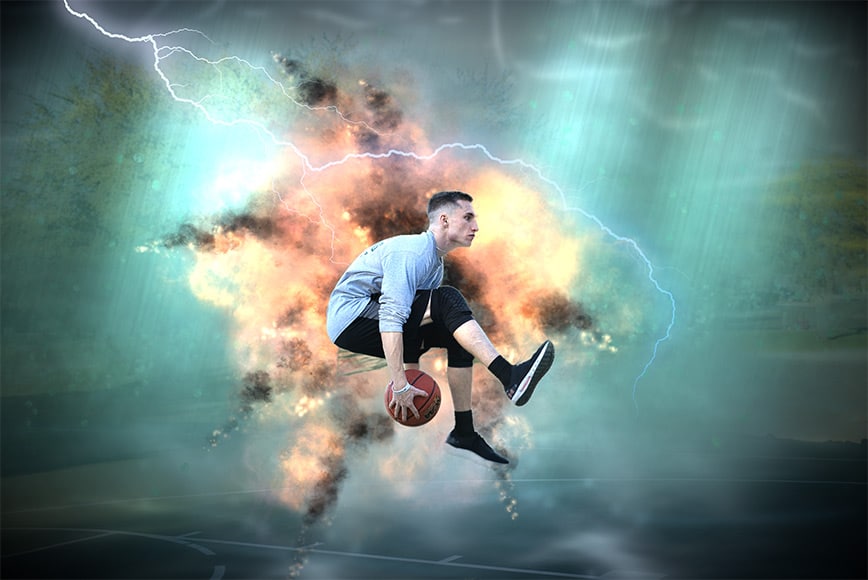
Add Hollywood-level visual effects in a snap, with thousands of creative presets and excellent layer and masking functionality for maximum control over every detail.
Use code SHOTKIT-2022 to save 15%.
Boris FX Optics isn’t just peddling some classy looks – their special effects are truly exceptional, especially in that many are rendered in real-time. You get control over just about every single aspect of each effect.
Let’s take a look at what this impressive piece of software has to offer and whether it’s right for you.
What is Boris FX Optics?
- Stunning visual effects
- Advanced layer functionality
- Multiple masking options
- Accurate EZ masking
- Layer masks are transferrable between PS and Optics
- Includes 75 Sapphire effects filters
- Incredible level of control over parameters
- Instructional videos available
- Standalone + PS/LR plugin
- Reasonable Price
- High learning curve
- Can be resource-heavy on some computers
- Overwhelming amount of choices
At the most basic level, Boris FX Optics is an image editing application with filters that range from basic image adjustments to Hollywood-level special effects.
It works as both a standalone program and as a plugin for Adobe Photoshop and Lightroom.
Boris FX as a company is best known for movie effects used on films such as Star Wars, Game of Thrones, The Mandalorian, Avatar, and so many more. Optics, however, was designed especially with still photography in mind.
The program includes many of their best-loved cinematic effects, as well as an impressive array of true-to-life film stocks, specialized lens effects, and just about every lighting effect you can imagine.
There are ten filter categories: Color, Diffusion/Blurs, Film Lab, Grades/Tints, Image, Lens/Distort, Light, Particle Illusion, Render and Stylize. Within each filter category, you can find a ton of presets – almost all with an extensive set of customizable parameters.
Combined with the program’s layer and masking abilities, the creative options really seem to have no limit.
Features
-
Professional Cinema-Quality FX

Image courtesy of Boris FX
What really sets Boris FX Optics apart is the pure genius of its cinematic effects. Once you get the hang of how the program works, adding precise, top-level eye candy is incredibly easy. The biggest hindrance is the sheer volume of effects to choose from.
In the 2022 version, there are 160 filters and literally thousands of presets. As I mentioned before, these range from basic image adjustments to the special effects you might see in an action-adventure movie.
Explosions, lightning bolts, mists… If you’ve seen it on screen, it’s likely Boris FX Optics has it.
In fact, this newest update includes a number of the cinematic special effects previously available only in their film and video offerings – the Sapphire filters. These include the fanciest of the lighting effects and when used well, they’re simply stunning.
-
Lighting Filters

This image was created using a few of the excellent Sapphire filters – Lens Flare, Sparkles, Aurora, and Vignette.
The Boris FX Optics lighting filters range from simply useful to absolutely amazing.
It’s easy to yield to the temptation to stick with the more impressive effects – at least for a while – but once I started playing around with their subtler effects I was amazed at what a positive difference they made. Their “ambient light” filter alone has made a huge difference to several images.
Besides Ambient Light, you can also add Auroras, Edge Rays, Glints, Glows, Glow Rings, Gobos (over 800 of them!), Light Leaks, Light Rays, and so much more.
Keep in mind that most of these categories have a number of presets within them. (There are 150 lens flares alone – all of them excellent!)
In fact, there are so many of them that it’s easy to get lost and/or forget where a certain effect is. Luckily the search functions work well (if you remember what the effect is called). You can also favorite your most-used filters.
-
Particle Illusion
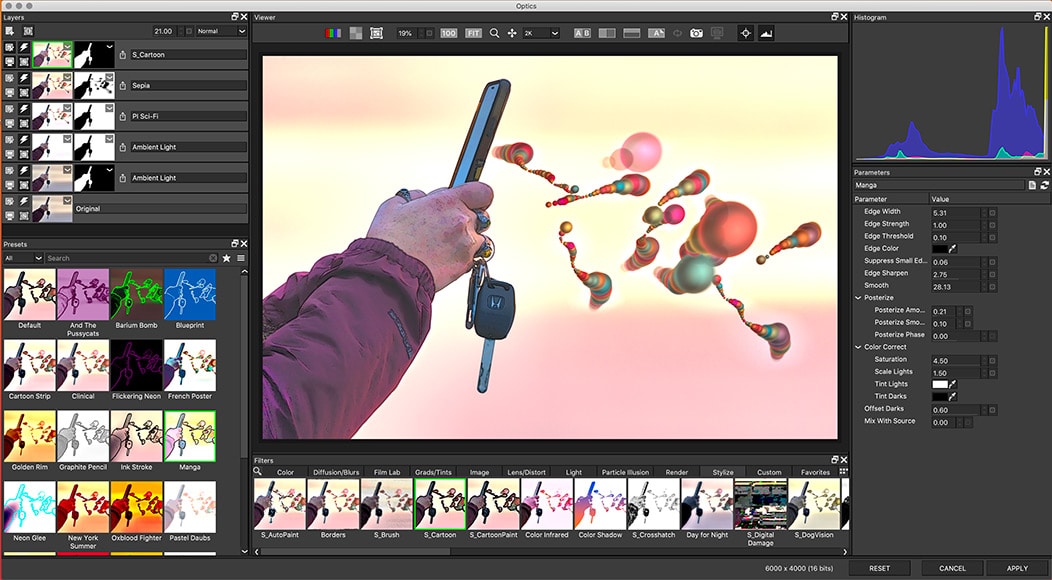
This was originally just a boring candid shot I took of someone photographing the ocean. I cropped down to just her hands and camera, added in some Ambient Light and changed the color tone, and then chose some particles from the Sci-fi series. It went from a lacklustre image to this in about 20 minutes. Had I taken more time with it, I could have gotten the force and direction of the particles just right, as everything with particles is infinitely adjustable.
The most exciting addition to Optics 2022 (other than the additional Sapphire filters) is the new Particle Illusion category. With it, you can add the illusion of just about any kind of 3D particles, from smoke and steam to water, fireworks, and fireballs.
There’s even a Particle Illusion engine that allows you to dial in every detail, including the size of the particles, spin, force, angle, and even where in the timeline of their movement you want to freeze the action. (You can do this outside the engine as well.)
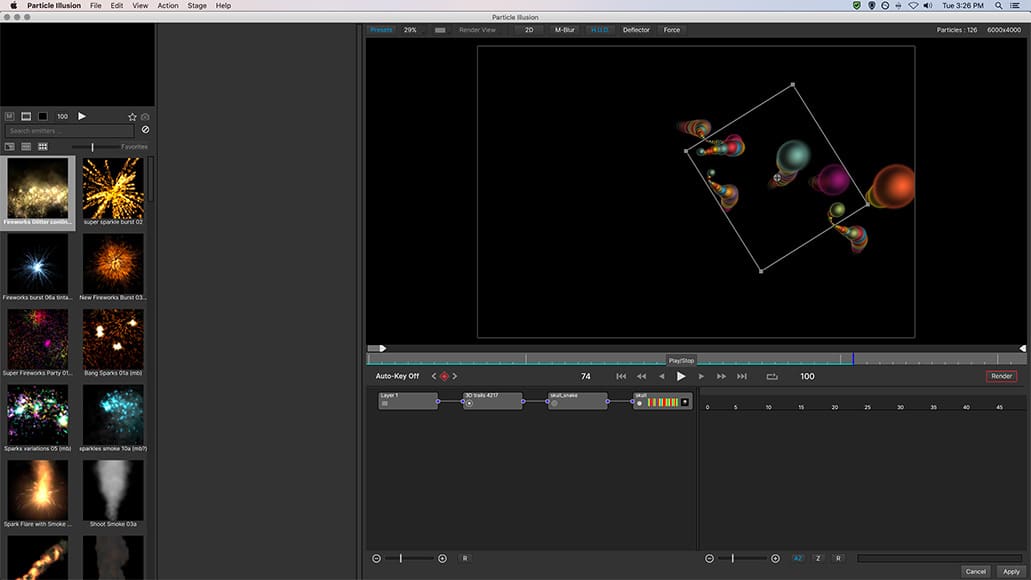
The Particle Illusion Generator has a steeper learning curve than the main Optics interface, but it lets you control literally every element of how the particles present.
It takes a while to get the hang of it (even with the instructional videos), but the possibilities are truly endless – it’s about as 3D as you can get in a 2D image.
-
Color Grading Presets

Bladerunner 2049
While it’s become common for editing programs to offer sets of LUTs, I’ve never seen such a full collection of color grades available in one place for no extra cost. Included in these are 89 color-grade presets from famous movies.
You can find these under their Film Lab tab, along with the other historical film stocks available (over 600).

Children of Men
Children of Men has a decidedly cooler color grade than either Blade Runner 2049 (which looks like the world is on fire) or Jurassic Park (below).

Jurassic Park
As much as I’m a fan of creating my own color grades, I did find it fascinating to try out the different looks from some of my favorite films.
-
Layer Functionality

One of the more crucial aspects of how Optics works is its layer panels. They are especially important as it doesn’t seem like you can add more than one effect to a single layer (except with the Particle Illusion Generator). Each new effect needs its own new layer.
Luckily the layer panels operate more or less as one would expect them to. The order is drag-able, as are the masks. There are plenty of blending modes, as well as an opacity master for each layer.
-
Masking
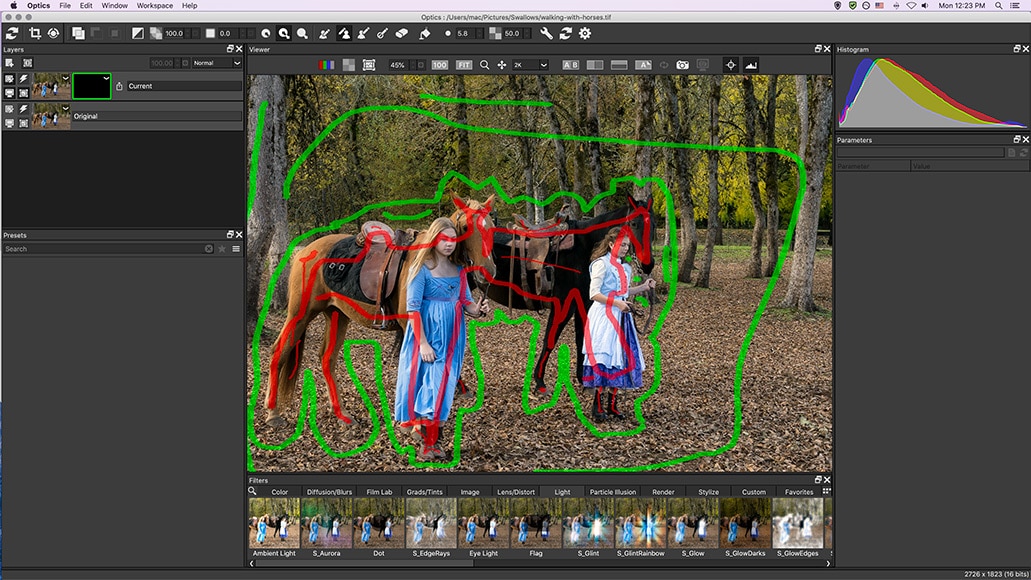
Using EZ Mask to select the background. (Usually, you’d use green for the subject, but sometimes I do the reverse if all I’m wanting to change is the background. In the end it doesn’t really matter, as you can easily invert the mask.)
I was surprised by how well the masking options in Optics actually work – especially the EZ Mask option (seen above).
In addition to EZ Mask, you can also create masks via the paint, gradient, spot, path, snap, and selection options.
You can use multiple masks on a single layer, use the blending modes on the masks, and even import masks from Photoshop via the alpha channel. There’s even Wacom tablet support.
What I found challenging, however, is that once I chose a means for creating a mask, I was stuck with that means for making any further adjustments unless I wanted to add another mask to the same layer. For example, if I wanted to first make the mask with EZ mask and then use a brush for fine-tuning, I’d have to use two separate masks.
That being said, the EZ mask is surprisingly accurate. Of course, if you need superb masking accuracy and/or you prefer Photoshop’s superior masking tools, you can always create your masks in Photoshop and then import them into Optics.
Overall Performance
While many reviews report that Optics is pretty draining on their hardware, I had no problems on my 2017 iMac until I used up to six or seven layers. At that point, I started having a few delays – especially when moving elements around within an effect.
This actually isn’t that surprising, given that the effects are actually being rendered, not just overlayed. In fact, I was actually surprised at how well my computer did with it all. The delays weren’t too overwhelming until I really piled the layers on.
I did have a few other problems, the most persistent being having the program freeze when I went to render a Particle Illusion.
Otherwise, everything was snappy – far more so than with Luminar 4, Luminar AI, or On1 2022 on my computer.
Value for Money
Boris FX Options is offered both as a subscription ($9 monthly/$99 annually) and as a one-time purchase ($149 including one year of upgrades). With that, you get the standalone program and plugins for both Adobe Photoshop and Lightroom.
Whether it’s worth it to you really depends on what you like to do with your images.
If you frequently need to design custom graphics, then this is an incredible piece of software at a great price.
In addition to its specialty effects, the sheer number of optical camera filter presets, color grades, and film stocks far exceeds most other programs – with no hidden costs or further purchases needed.
On the other hand, if you’re more into photo realism and just want to make standard edits to your images, Optics probably wouldn’t be worth your time or money.
Of course, you can use Optics as a standard photo editor for standard edits, but that’s not really where it shines. It’s really for those looking to create fantastic original artwork.
Personally, I wouldn’t have been tempted without having tried it out first.
(And yes, there’s a free trial available.)
Boris FX Optics Code
Get a 15% discount on Boris FX Optics by using the code SHOTKIT-2022 at checkout.
Alternatives to Boris FX Optics
While there are a lot of photo editors out there offering extensive presets, I can’t say I’ve run across anything quite like what Optics offers – neither in terms of diversity nor in terms of the intimate control you’re given over the parameters.
Nik Filters by DXO – a long-time photographer staple – is the same price ($149) and offers fantastic filters with plenty of fine-tuning options, but it’s almost like apples and oranges when it comes to the types of effects they’re offering.
The same is true of Topaz Studio II ($99). It has hundreds of looks, but nothing even remotely similar to what Boris FX Optics offers in terms of its high-end movie effects.
ON1 and Luminar both have lots of presets, but again, nothing that compares to, say, the Sapphire collection of filters Optics offers.
They also don’t come close to offering the same level of control that Optics does – especially now that Luminar AI and Neo don’t have layer functionality.
Of course, both On1 and Luminar offer far better workflows for standard image editing, but as mentioned before, that’s not really what Optics is for. I wouldn’t recommend using it as your sole image editor.
Boris FX Optics Review | Conclusion
I went into trialling Boris FX Optics somewhat bemused at having to look through another huge set of effects filters. After just a couple of hours of playing around with it, I came out totally loving it.
While I’m more of a photo-realistic photographer, I’ve dabbled from time to time in digital art (especially when I was a web designer) and Optics has really whetted my edge for getting back into it.
It takes a task that would take countless hours in Photoshop and literally turns it out in moments. It still takes a lot of experimenting to get the right look, but just about anyone can do it.
If you’re a photographer who doubles as a digital artist or a graphic designer, you’ll simply LOVE this program.
It’ll probably be a little overwhelming in the beginning until you get used to where everything is, but once you get the hang of it, it’s nothing short of fun… and infinitely useful if you’re regularly required to produce innovative, creative imagery.
(Keep in mind, all of the above images – other than the one from Boris FX – were created while having the software only a week and playing around with it in my spare time. I’m in no way a special effects pro and while I’ve done a fair amount of compositing and graphic art, it’s been a long time since I’ve focused on it.)
Still on the fence?
You can download the free trial by clicking below and take Optics for a test run.

Add Hollywood-level visual effects in a snap, with thousands of creative presets and excellent layer and masking functionality for maximum control over every detail.
Use code SHOTKIT-2022 to save 15%.
Teryani Riggs (they/them) is an adventure, who loves all things wild and free. Teryani can often be found in the midst of a social/eco-justice campaign, hiking through wild backcountry, or hitchhiking around the world listening to other people’s stories. While their focus has historically centered on landscape, travel, and wilderness photography, they’ve also been hired to shoot genres as varied as historical fiction reenactments in the studio to product and food photography.





